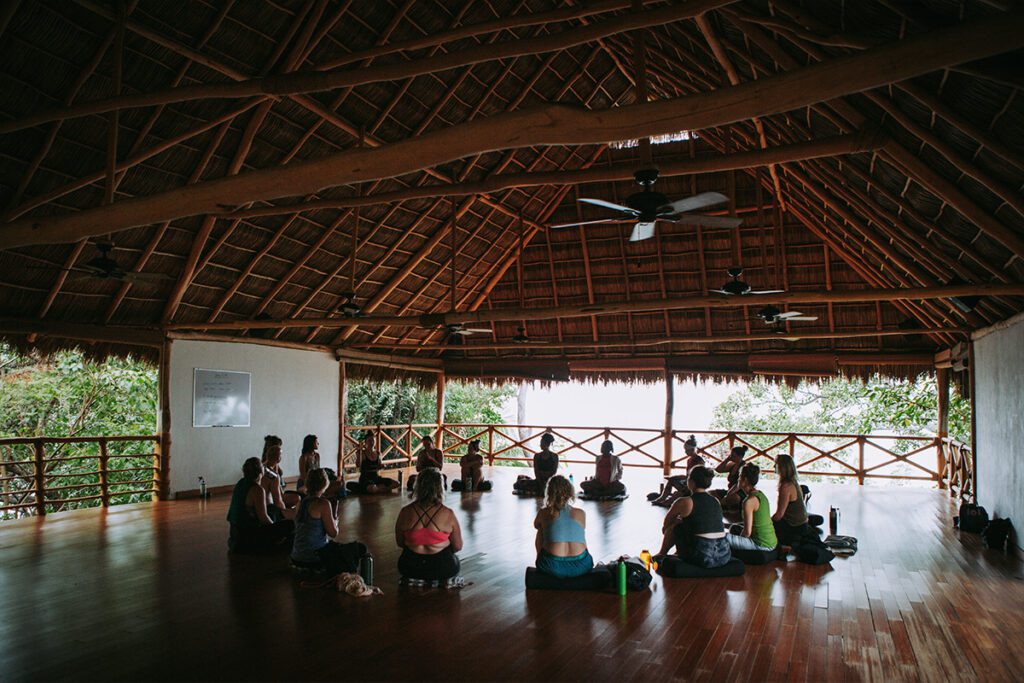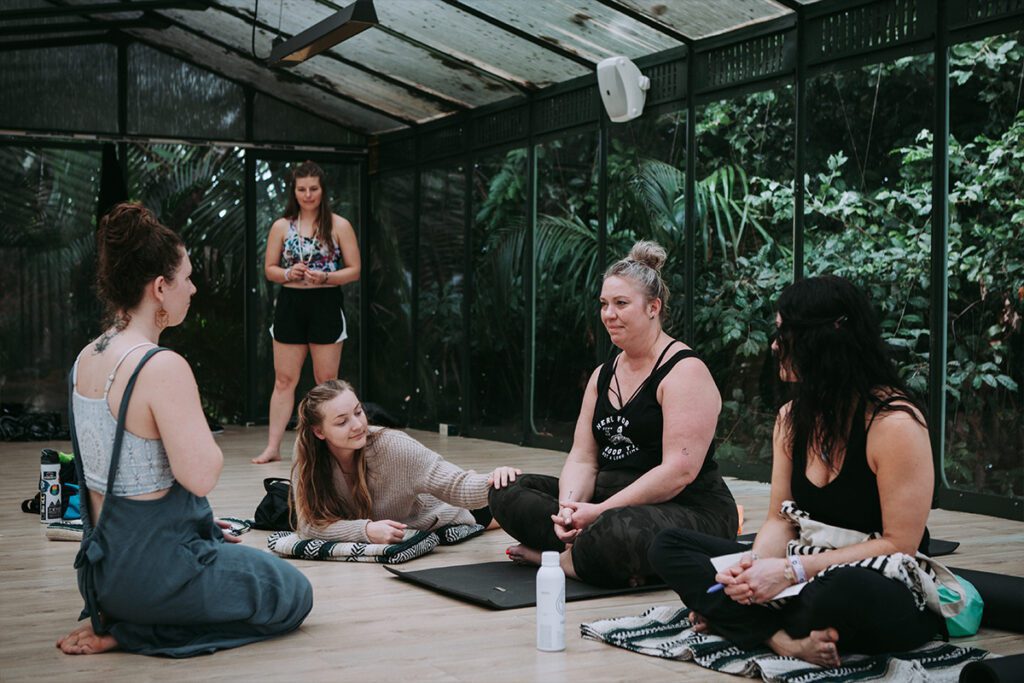Yoga retreats offer a unique blend of personal growth, mindfulness, and relaxation in beautiful settings. For many yoga instructors and wellness enthusiasts, organizing a retreat is a dream come true. Beyond the spiritual and personal benefits, retreats also hold a financial promise that can be both exciting and rewarding. In this comprehensive guide, we’ll explore the financial aspects of organizing a yoga retreat and help you understand the profit potential behind this transformative venture.
Understanding the Financial Landscape
Before diving into the potential profits, it’s crucial to recognize that the financial success of a yoga retreat is influenced by several factors, each contributing to the overall picture:
1. Location and Venue Selection:
The choice of location significantly impacts pricing and appeal. Exotic destinations may command higher fees, while local retreats offer affordability and immediate access.
You need to conduct a thorough research of the different offerings on the market. There is a very wide range of venues and destinations you can choose from (mountain retreats, luxury spas, low key countryside lodges, glamping on pristine beaches, Villas on a glamorous coastline in Italy, etc): you are only limited by your own creativity and ability to convince your students to follow you to the end of the world.
However, consider something. When you first reach out to these potential venues, what is your very first impression of customer service? How fast and accurately do the retreat centers address your questions and concerns? Trust your gut, if the pictures look great but response seems to be on the slow side, you might expect the same sloppiness while you’re on site.
Related Content: 10 popular venues for organizing a yoga retreat
Xinalani and Mixto are among the high end destination retreat centers on the market. For some, the price tag may seem steep, however, we do offer a wide range of accommodation to fit all ends of your students’ budgets. From very affordable yet cozy and inviting dorm-style rooms up to lavish Beach Casitas with a heated plunge pool, an open air oceanfront shower and a private patio, there should be an option for every kind of budget.
Know your audience, investigate their means and wishes. There are some tricks of the trade that you should know about. For instance, to reduce the price of lodging, consider convincing your participants to share a luxury room. At Mixto you can book a gorgeously furnished palm thatched Penthouse and we can switch the king size bed for 4 twin beds. You can then create a splendid accommodation experience at a reasonable price for each participant.
2. Lodging Prices can vary depending on seasonal demand
Lodging prices are subject to significant fluctuation and can be heavily influenced by the time of year. During peak tourist seasons, prices for accommodations can skyrocket as demand outstrips supply, most properties all capitalize on the increased number of visitors. Conversely, during the off-peak seasons, when tourist flow is at a low ebb, prices can drop substantially. This allows budget-conscious travelers to take advantage of reduced rates.
Savvy retreat planners often plan their trips strategically to coincide with these price variations, thereby optimizing their travel budgets. It’s also noteworthy that some destinations have counter-intuitive peak seasons due to specific local attractions or climate considerations, making research a crucial component of travel planning. The Mexican Pacific shore resort destinations typically have higher rates in the winter from November to April. Lodging rates usually drop by 15-20% after Easter.
3. Retreat Duration
The retreat’s length and pricing structure are key determinants of revenue. If you’re at the very start of your retreat career as a leader, perhaps you could consider throwing a week-end yoga getaway at a local lodge. Some local retreat venues may accept bookings for 2-3 nights, which may mean less risks for your start-up venture and the perfect opportunity to work on your content and scheduling skills. What are you going to offer that sets you apart? What workshops, what learnings, what themes do you want to share?
Remember experience is key and you’ll learn a lot by doing. Retreats are all about the value you offer (personal growth, wellness, learning) and how tight you keep your community together (through shared experiences, communication, or activities).
International retreats are a different topic. Most retreat leaders who book Mixto are here for 7 straight nights. It’s the bare minimum to make it worth the traveling (consider airfare, ground and sea transportation), plus once you are here, you won’t ever want to leave, and you’ll need time to enjoy all the experiences we offer, so better stay the whole week.
Related Content: Are yoga retreats a profitable business?
Pricing Strategy

Figuring out the comprehensive price of your retreat can be a nightmare especially if you’re not a number person. Typically, retreat planners offer their students an all inclusive 7 night wellness holiday that includes yoga classes, accommodation, meals and ground & boat transportation. Some also decide to add optional staff gratuities and on-site extra group activities such as a Temazcal or a Sound Bath (the resort charges extra fees for those activities).
On top of all those costs, you need to add your personal mark-up or profit margin. Our recent investigations over 100+ retreats showed that prices usually range from $1,800 to $4,000 per person, depending on room type and occupancy. On average, retreat planners add on $500-$700 per retreat participant, sometimes less, sometimes more, depending on their demographics, the scarcity of space, the value of the knowledge they will share during the retreat, and their experience.
Figure out the price of your retreat
At Mixto, to make retreat planners’ life easier, we have developed this very handy tool to calculate the total price you need to charge your participants. You just need to input your desired profit per participant, and your wished dates, and you’ll get the all inclusive price per person by room category. Try it! It’s very easy!
And this is the same calculator tool for Xinalani with the 2024-2025 rates: How much should I charge for my retreat in 2024 – 2025?
Should you have any questions about these calculators, email us at info@xinalaniretreat.com
Caution: Offering early-bird discounts, package deals, and optional add-ons can affect profitability.
Guesstimating your break-even point

Spoiler alert: You need to aim for at least 10 participants: and yes it’s possible with hard work and dedication.
The break-even point is a financial concept that refers to the moment when a business’s total revenues are exactly equal to its total costs, meaning you’re neither making nor losing money, but simply “breaking even”. It’s a crucial indicator for your yoga retreat because it shows the minimum number of attendees you need to start making a profit.
To accurately calculate the break-even point for a yoga retreat, it’s important to first itemize and understand your fixed and variable costs, as well as the revenue each attendee brings in. Here’s how you can approach this:
Calculate Fixed Costs
These are expenses that remain constant and are not affected by the number of attendees. Examples include:
- Round trip airfare for you and your co-leader to Puerto Vallarta (e.g., $600 each).
- Ground and sea transportation to the retreat center (e.g., $115 each).
- Marketing expenses, such as paid ads on Instagram.
- Branding items like your retreat logo on a welcome tote bag for participants.
- Salaries and travel expenses for additional staff if managing a large group.
Identify Potential Savings
Some retreat centers offer incentives which can reduce your fixed costs. For instance, at Xinalani and Mixto, bringing a minimum of 10 paying guests means you receive complimentary lodging and meals for yourself and your co-host.
Remember, a thorough understanding of these costs, along with careful planning of your pricing strategy, will guide you to the point where your retreat becomes profitable.
Identify Variable Costs
The quotes provided at Xinalani comprehensively account for variable costs for each room category, including lodging, all meals, and both ground and sea transportation. However, please be aware of our room attrition and cancellation policy.
It’s crucial to release your rooms by the specified dates in our calendar to avoid incurring charges for unused rooms. Failing to do so could result in being responsible for partial or full charges of the rooms. We recommend reviewing the policy carefully to prevent any unnecessary expenses.
Room occupancy scenarios: Other variable costs that could impact your profitability include room occupancy. For example, if you planned for double occupancy, capitalizing on one space for two participants’ fees, and your guests prefer single occupancy, you will encounter an opportunity cost due to the limited number of rooms. This could significantly affect your revenue. To mitigate this, consider implementing a higher mark-up for single occupancy.
Ultimately, your pricing strategy should be flexible and adapt to your participants’ preferences and the availability of rooms.
Determine the Retreat Price
This is the amount each participant will pay to attend the retreat. For this, use our Retreat Price Calculator. In that step, all you need to do is figure out how much you want to make per student you bring, ie your mark-up per attendee.
Once you have this information, the break-even point is calculated as follows:
Break-Even Point (in number of attendees) = Total Fixed Costs / Mark-up per Attendee.
Real Life Case Studies

Case study 1: Small group
Fixed costs:
Transportation costs for 1 leader: $750
Lodging costs for leader at Xinalani: $1,900
Marketing expenses: $250
Total: $2,900
Mark-up per attendee: $500
Break-even: 2,900 / 500 = 5.8 participants.
In this base case scenario, if she brings 6 participants, the retreat leader will have made just enough money to cover her room and board and travel fees. Profit estimated: $100. It’s like a free vacation where you teach yoga twice a day. A lot of retreat leaders are very happy with that.
Case study 2: Average size group (16 participants / 2 co-leaders)
Fixed costs:
Transportation costs for 2 co-leader: $1,500
Lodging costs for leader at Xinalani: $2,500
Marketing expenses: $600
Total: $4,600
Mark-up per attendee: $600
Break-even: 4,600 / 600 = 7.6 participants. So what that says is if they manage to get 8 guests onboard for their retreat, the two co-leaders break even.
However let’s project that they do get to the average size of 16 participants, then their bottom-line looks like that:
Total mark-up: $600 x 16 = $9,600
Fixed costs:
Transportation costs for 2 co-leader: $1,500
Lodging costs for co- leaders at Xinalani: $0
Marketing expenses: $600
Total: $2,100
Gross Profit:
9,600 – 2,100 = $7,500
In this case study with 16 paying attendees, each co-leader pockets a profit of $3,750.
Since they’re bringing more than 10 paying participants their room and board is free per the incentive policy, so their fixed costs are reduced to $2,100 instead of $5,600.
Case study 3: Large group (40 paying attendees / 2 co-leaders / 2 assistant teachers)
Fixed costs:
Transportation costs for co-leaders and assistants: $3,000
Lodging costs for 2 co-leaders at Xinalani: $0
Discounted lodging costs for 2 assistants: $1,200
Stipend for 2 assistants: $1,600
Marketing expenses: $1,000
Total: $6,800
Total mark-up: $600 x 40 = $24,000
Gross Profit:
24,000 – 6,800 = $17,200
In this case study, each co-leader pockets a profit of $8,600.
Since they’re bringing more than 25 paying participants the co-leaders get free room and board and their assistants get a free room. The assistants are only charged for meals, so their fixed costs are relatively low.
Final Note
It’s important that you remember to include all costs and to estimate them as accurately as possible. After reaching the break-even point, any additional attendees will contribute to profit. It’s also useful to consider a contingency buffer in case of unexpected expenses or fewer attendees.
Related content: Organizing a successful yoga retreat: Tips to ensure a smooth and enjoyable experience
Beyond Monetary Gains

While the profit potential is undoubtedly exciting, it’s essential to remember that the value of a yoga retreat extends far beyond monetary gains:
- Personal Growth: Organizing and leading a retreat can be a deeply transformative experience. It allows you to share your passion, connect with like-minded individuals, and foster personal growth, which is your dharma.
- Community Building: Retreats create a sense of community among participants, leading to lasting friendships and connections. Each successful retreat generates its own repeat business. Happy attendees will likely sign up for next year and bring new guests along. So even if you start small or if you struggle at first, don’t quit, you will end benefiting from the snowball effect.
- Spiritual Fulfillment: Many retreat leaders find profound fulfillment in guiding others on their wellness journeys.
Conclusion: Balancing Profit and Purpose
In conclusion, the financial side of yoga retreats offers the potential for profit, but it also demands careful planning, budgeting, and realistic expectations. While monetary gains are highly possible, the intrinsic rewards, including personal growth, community building, and spiritual fulfillment, are equally significant. By balancing profit and purpose, you can create a retreat that not only enriches your participants’ lives but also fulfills your own journey as a retreat leader.
Stay tuned for more valuable insights as we continue to support you in your retreat planning journey.





